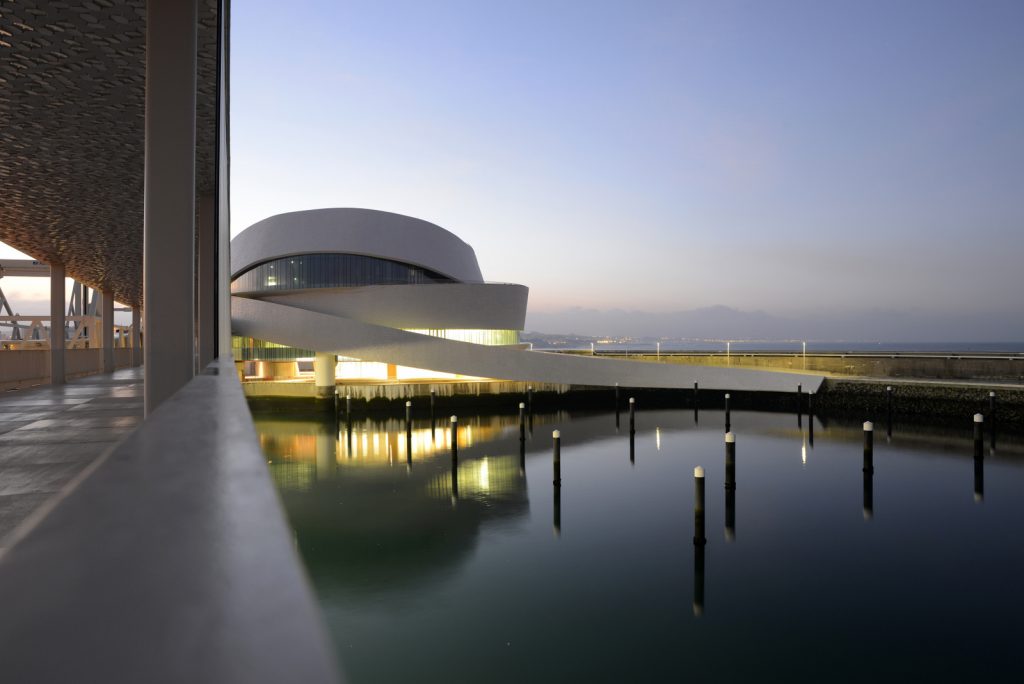2021 Annual Conference – Venue
The 2021 MIT Portugal Annual Conference will take place at Porto Cruise Terminal.
About Porto Cruise Terminal
The Porto Cruise Terminal is the largest project ever for the opening of the Port of Leixões to the city and an important gateway of the region. It is situated at the South Mole of the Port of Leixões, just 3 Km from the city of Porto. Since April 2011, the new pier with 340 metres of length has received the biggest and the most glamorous cruise ships from the worldwide cruise fleet, boosting the cruise tourism in the North of Portugal region. With this new pier, the Port of Leixões became able to receive cruise ships of larger dimensions, up to 300 metres long. Since the opening of the new pier, the number of cruise ship calls and passengers at this port has been significantly increasing.
Besides that, the main building also comprises the Science and Technology Park of the Sea of the University of Porto, which includes the Maritime Research Centre in the New Cruise Terminal Building (occupying the basement ground, 2nd and 3th floor). This Park of Science and Technology focused in the Resources of the Sea managed by the University of Porto and is integrated in a recognized Strategy for Collective Efficiency, with the Ocean XXI Association for Research and Maritime Economy and the Cluster of the Creative Industries of the Northern Region.

About Matosinhos
Tradition and progress in this Atlantic coast city…
Founded at the mouth of the river Leça, Matosinhos has always benefited from its close proximity to the sea. Early references to a settlement known as Matesinus date back to the 11th century. In 1514, a royal charter was granted by king D. Manuel I even if it was not until the 19th century that Matosinhos gained town status (1853) before becoming a city in 1984.
The roots of this city lie in fishing and salt production. Matosinhos still remains Portugal’s most important fishing port although industrialisation (canning, engineering and wood processing) and diversification means Matosinhos is now home to three of the key components of the regional economy: the Leixões container port, the Petrogal refinery and the Exponor conference centre that regularly puts on major international events.
The Sanctuary of Senhor Bom Jesus is the most important monument in Matosinhos but attention must also be drawn to the heritage of Leça da Palmeira. This is the oldest parish in Matosinhos and well worth a visit and when not for its beaches then for the artistic grace of many of its buildings. Siza Vieira is just one architect to have made his mark here with the Salão de Chá (Tea House) and the Piscina das Marés (Salt Water Swimming Pool). There are also other historical landmarks including the Boa-Nova Lighthouse, the Conceição Farm and the Nossa Senhora das Neves Fortress.
…and Porto
Located along the Douro river estuary in northern Portugal, Porto is the second-largest city of Portugal and one of the oldest tourist destinations in Europe. Porto has one of the richest artistic, cultural and historical heritages in Portugal, as shown by the several monuments and museums and theaters all over the city. This soulful city was classified as a World Heritage Site by UNESCO in 1996.
You can find relevant information about the city of Matosinhos and Porto on the following websites:
An hour distance from Porto other interesting cities can be visited, such as the Historical Centre of Guimarães, European Cultural Capital 2012 and also classified World Heritage site by UNESCO, as well as Porto city and Douro Valley; the cities of Braga, Viana do Castelo, Ponte de Lima and Amarante; countless Castles, Manor Houses, Historic Hotels and Rural Guest Houses, the Douro Valley, the oldest wine region of the world, where Porto Wine is produced. For all this Porto and North Portugal is a multifarious and diversified tourist destination.
